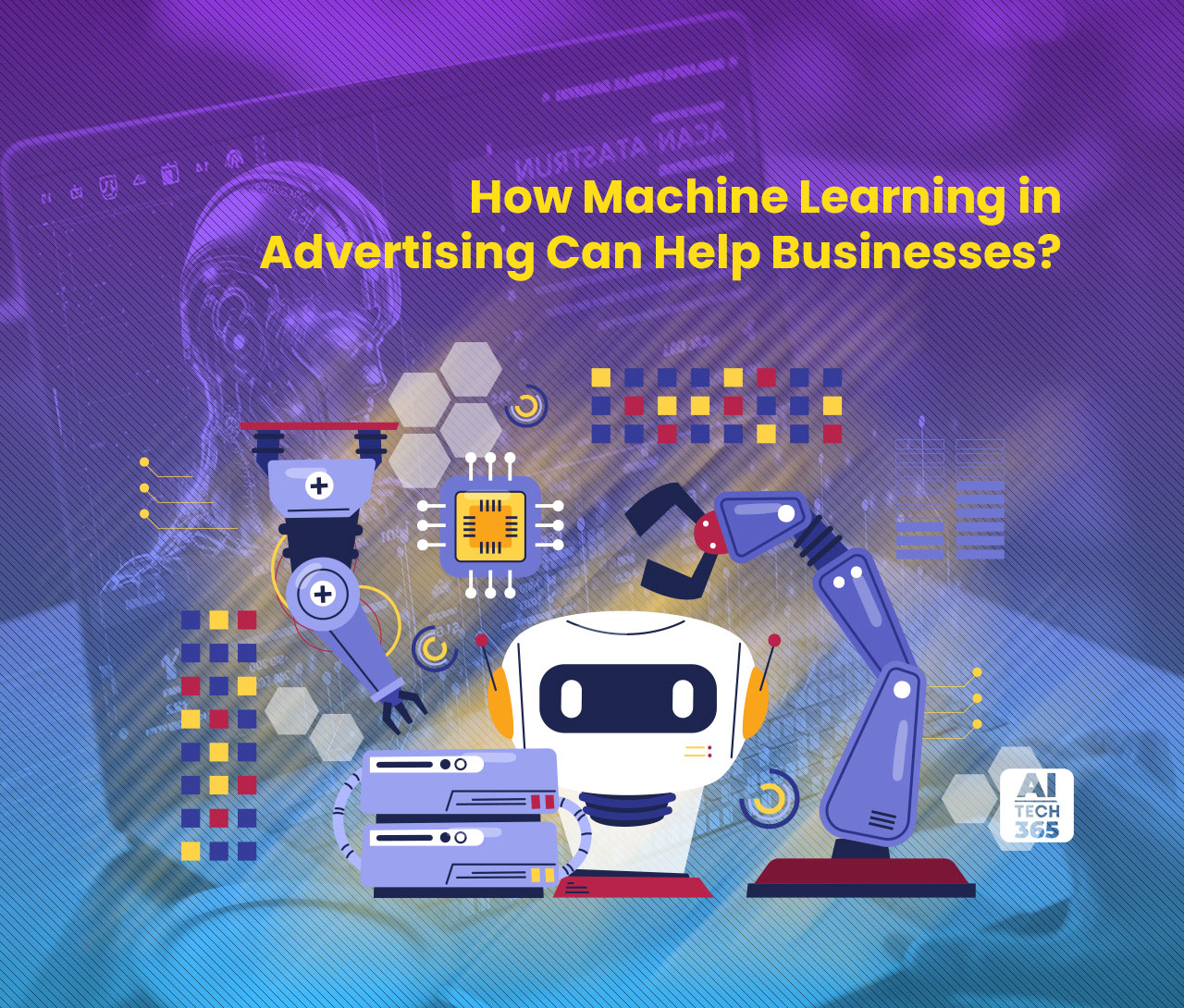Marketers aim to present the perfect product to the ideal consumer precisely when they’re poised to make a purchase. Over time, marketers’ capacity to achieve this goal and pinpoint increasingly specific customer segments has expanded tremendously. In today’s world where AI is increasingly garnering attention, machine learning in advertising is not an exception.
49% of business employ machine learning and AI in their marketing and sales efforts. Netflix, for instance, managed to save a staggering $1 billion due to its machine learning algorithm, which significantly enhanced personalization and content recommendations for its users.
Without any delay, let’s delve in and everything about it.
What Is Machine Learning?
Machine learning, a subset of artificial intelligence (AI), concentrates on crafting algorithms and models that empower computers to learn from data and autonomously make predictions or decisions, without explicit programming. It relies on statistical techniques and algorithms to scrutinize vast datasets, detect patterns, and make informed predictions or decisions based on those patterns.
The machine learning process typically comprises the following stages:
- Data Collection: Gathering pertinent data from diverse sources like databases, sensors, or the internet.
- Data Preprocessing: Refining and organizing the data by eliminating noise, managing missing values, and transforming it into a suitable format for analysis.
- Feature Extraction/Selection: Identifying and cherry-picking the most pertinent features or variables from the data likely to influence the target prediction or decision.
- Model Training: Utilizing the refined data to educate a machine learning model by providing it with input data and the corresponding desired output or target variable.
- Model Evaluation: Gauging the efficacy of the trained model by subjecting it to a separate dataset and evaluating its accuracy or predictive prowess.
- Model Deployment: Embedding the trained model into a real-world application or system to facilitate predictions or decisions based on new, unobserved data.
What is Machine Learning in Advertising Mean?
Machine learning in advertising harnesses the power of artificial intelligence (AI) and sophisticated algorithms to analyze data and enhance various advertising functions. This involves utilizing technology capable of learning from previous interactions to forecast future outcomes, mimicking human learning processes.
Through machine learning, advertising technology can efficiently handle vast datasets and produce valuable insights applicable to tasks like audience targeting, personalization, and media buying. As the machine learning system processes more data, it improves its proficiency in executing these tasks, akin to human learning.
How Machine Learning in Advertising Can Help Businesses?
Machine learning in advertising can help save millions of dollars for marketers. Below are some of the ways.
Leveraging Data Insights for Targeted Ads
Machine learning and AI offer unparalleled capabilities in processing vast datasets to forecast future trends. In advertising and marketing, this technology facilitates the delivery of highly relevant ads to the right audience at the optimal moment, without relying on personally identifiable information. With the assistance of machine learning models and AI technology, ads are becoming hyper-targeted, leading to the desired return on investment (ROI) for marketers.
Predictive Targeting and Testing
Predictive targeting employs AI and machine learning to anticipate future consumer actions based on behavioral patterns and historical data. By analyzing this data, marketers can predict the likelihood of various customer actions, such as making a purchase or engaging with products. These insights aid in creating refined customer personas, enabling brands to tailor campaigns to specific audience segments for maximum relevance.
AI Product Recommendations for Personalization
AI-powered recommendation models play a pivotal role in guiding customers through the buyer’s journey. These models leverage customer attributes and behaviors to suggest relevant products in real-time, enhancing the overall shopping experience. Notably, recommendation models have evolved to incorporate implicit feedback, focusing on behavioral signals to understand customer intent and preferences.
Advancements in Recommendation Models
Recent advancements in recommendation models include a shift from explicit to implicit feedback, as well as increased granularity in product recommendations. By analyzing individual product SKUs and understanding customer behavior, these models offer more personalized and precise recommendations, reshaping the advertising landscape to prioritize customer needs and preferences.
Real-time Personalized Ad Targeting
In today’s dynamic market, real-time adaptation is essential for effective advertising. Personalized ads, tailored based on factors like seasonality, region, and individual interests, are no longer optional but imperative for driving conversions. Machine learning enables advertisers to detect and adapt to changing preferences swiftly, ensuring that ads resonate with customers throughout their journey.
Enhancing Brand Safety and Alignment
Beyond personalized targeting, AI and machine learning enhance brand safety and alignment by ensuring ads are placed in suitable contexts. By analyzing content and audience sentiment, advertisers can safeguard brand reputation and trust, maintaining alignment with their values and avoiding association with biased or negative content.
Informed Decision Making with Data
One of the primary benefits of AI and machine learning in advertising is the ability to make data-driven decisions. By leveraging data analytics, brands can optimize ad placement, refine targeting strategies, and maintain brand consistency. Unlike human biases, machine learning algorithms base decisions on empirical data, leading to more accurate and effective advertising campaigns.
Final Takeaway
Machine learning has revolutionized the advertising industry by leveraging advanced algorithms and artificial intelligence to analyze data and optimize advertising strategies. It enables advertisers to automate tasks, improve targeting accuracy, personalize ad experiences, and enhance campaign performance. By harnessing the power of machine learning, advertisers can make data-driven decisions, deliver more relevant ads, and ultimately achieve better results in their advertising efforts. Machine learning in advertising has become an invaluable tool for businesses looking to maximize their return on investment and deliver impactful and personalized ad experiences to their target audience.


